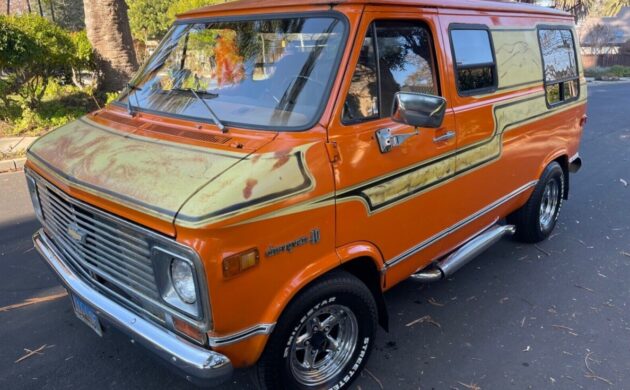OTR Trucks For Sale: Your Comprehensive Guide to Navigating the Market
OTR Trucks For Sale: Your Comprehensive Guide to Navigating the Market cars.truckstrend.com
The backbone of modern commerce, Over-The-Road (OTR) trucks are the workhorses that keep goods flowing across vast distances, connecting producers with consumers. For independent owner-operators, small trucking companies, or large fleets, acquiring the right OTR truck is a pivotal business decision. It’s an investment in mobility, efficiency, and the very foundation of your operations. This comprehensive guide aims to demystify the process of finding and purchasing OTR trucks for sale, offering insights, practical advice, and actionable steps to ensure you make an informed choice.
Understanding OTR Trucks: The Long-Haul Powerhouses
OTR Trucks For Sale: Your Comprehensive Guide to Navigating the Market
At its core, an OTR truck, often referred to as a semi-truck, tractor-trailer, or 18-wheeler, is a heavy-duty vehicle designed for long-distance transportation of freight. Unlike local delivery trucks or vocational vehicles, OTR trucks are built for endurance, fuel efficiency over extended hauls, and driver comfort for multi-day trips.
Key characteristics that define an OTR truck include:
- Powerful Engines: Capable of pulling heavy loads (often up to 80,000 lbs Gross Combined Weight Rating, GCWR) across diverse terrains, typically ranging from 400 to 600+ horsepower.
- Sleeper Cabs: Most OTR trucks feature integrated sleeper compartments, providing living quarters for drivers on long routes, complete with beds, storage, and often amenities like refrigerators, microwaves, and entertainment systems.
- Robust Transmissions: Designed for heavy-duty applications, these can be manual or automated manual transmissions (AMTs), optimized for efficiency and power delivery.
- Large Fuel Tanks: Allowing for hundreds of miles between refueling stops, crucial for maintaining schedules and optimizing routes.
- Durable Chassis and Suspension: Built to withstand the rigors of continuous operation, varying road conditions, and heavy loads.
- Advanced Aerodynamics: Modern OTR trucks prioritize aerodynamic design to reduce drag and improve fuel economy.
The importance of choosing the right OTR truck cannot be overstated. It directly impacts your operational costs, driver satisfaction, reliability, and ultimately, your profitability.
Types of OTR Trucks Available for Sale
When looking for OTR trucks for sale, you’ll primarily encounter two main categories, each with its own set of advantages and disadvantages:

1. New OTR Trucks
Pros:
- Latest Technology: Access to the newest engine designs, safety features (e.g., collision mitigation, lane departure warning), telematics, and driver comfort amenities.
- Full Manufacturer Warranty: Provides peace of mind against costly repairs for a specified period or mileage.
- Customization: Ability to spec the truck exactly to your operational needs and preferences.
- Lower Initial Maintenance: New components mean fewer unexpected breakdowns in the early years.
- Enhanced Fuel Efficiency: Often incorporate the latest fuel-saving innovations.

Cons:
- High Upfront Cost: Significantly more expensive than used trucks, requiring substantial capital or financing.
- Rapid Depreciation: Trucks lose a significant portion of their value in the first few years.
- Lead Times: Can involve waiting periods for production and delivery if custom-ordered.
2. Used OTR Trucks
Pros:
- Cost-Effective: Substantially lower purchase price, making them accessible for smaller budgets or new ventures.
- Slower Depreciation: Much of the initial depreciation has already occurred.
- Immediate Availability: Can often be purchased and put into service quickly.
- Proven Reliability: Older models might have a track record of durability that is well-documented.
Cons:
- Higher Potential for Maintenance: Wear and tear means a greater likelihood of repairs, especially if not well-maintained previously.
- No or Limited Warranty: Unless it’s a Certified Pre-Owned (CPO) vehicle, warranties are typically expired or very limited.
- Older Technology: May lack the advanced safety or efficiency features of newer models.
- Unknown History: Unless meticulously documented, the truck’s full maintenance and accident history can be a challenge to ascertain.
3. Certified Pre-Owned (CPO) OTR Trucks
A hybrid option offered by manufacturers and large dealerships. CPO trucks undergo rigorous multi-point inspections, often come with a limited warranty, and may have undergone certain reconditioning processes. They offer a balance between the cost savings of used trucks and some of the assurances of new ones.
Key Considerations When Buying OTR Trucks
Purchasing an OTR truck is a significant investment that requires careful consideration of various factors:
-
Budget and Financing:
- New vs. Used: Determine your comfortable price range.
- Financing Options: Explore commercial truck loans, lease-to-own programs, and lines of credit. Be prepared for down payments, interest rates, and loan terms.
- Operating Costs: Factor in fuel, insurance, maintenance, tires, and potential repairs.
-
Truck Specifications:
- Engine: Horsepower (HP) and torque ratings suitable for your typical loads and routes. Consider engine manufacturers like Cummins, Detroit Diesel, Volvo, PACCAR (Kenworth/Peterbilt), and International.
- Transmission: Manual transmissions offer more control but demand driver skill; Automated Manual Transmissions (AMTs) are becoming increasingly popular for ease of use and fuel efficiency.
- Axle Ratio: Affects fuel economy and pulling power. A lower ratio (e.g., 2.64) is better for fuel efficiency on flat routes, while a higher ratio (e.g., 3.42) provides more torque for hilly terrain.
- GVWR/GCWR: Ensure the truck’s Gross Vehicle Weight Rating (GVWR) and Gross Combined Weight Rating (GCWR) meet your operational needs and regulatory requirements.
- Suspension: Air-ride suspension is common for driver comfort and protecting fragile freight.
- Sleeper Size and Amenities: Crucial for driver retention and comfort on long hauls. Options range from compact to luxurious condo sleepers.
-
Brand and Model Reliability:
- Research reputable manufacturers known for durability, fuel efficiency, and readily available parts and service networks (e.g., Freightliner, Kenworth, Peterbilt, Volvo, Mack, International).
- Read reviews, check industry forums, and consult with experienced drivers or mechanics.
-
Maintenance History (for Used Trucks):
- Service Records: Request detailed maintenance logs. Look for consistent oil changes, preventative maintenance, and major repairs.
- VIN Check: Use services like Carfax or NMVTIS to check for accident history, flood damage, or salvage titles.
- Engine Hours/Mileage: Understand that high mileage isn’t always a deal-breaker if the truck has been well-maintained. Engine hours can be a better indicator of wear for long-idling trucks.
-
Pre-Purchase Inspection (PPI):
- Crucial for Used Trucks: Always arrange for an independent, certified mechanic specializing in heavy-duty trucks to perform a thorough inspection. This can uncover hidden issues that might cost thousands to repair.
- Road Test: Take the truck for a test drive, ideally under load, to assess performance, braking, steering, and transmission.
-
Emissions Regulations:
- Be aware of current EPA emissions standards (e.g., EPA 2010, GHG14, GHG17) and how they affect the truck’s engine technology (e.g., Diesel Particulate Filters – DPF, Selective Catalytic Reduction – SCR with Diesel Exhaust Fluid – DEF). Older trucks might not meet current standards in some regions.
-
Warranty and Service Agreements:
- For new trucks, understand the full terms of the manufacturer’s warranty.
- For used or CPO trucks, inquire about any remaining factory warranty or extended warranty options from the seller.
-
Resale Value:
- Some brands and models hold their value better than others. Consider this if you plan to upgrade or sell the truck in the future.
Where to Find OTR Trucks for Sale
The market for OTR trucks is vast and diverse. Here are the primary avenues to explore:
- Authorized Dealerships: Offer new trucks directly from manufacturers, often with comprehensive financing, service, and parts support. Many also have extensive used truck inventories, sometimes including CPO options.
- Independent Used Truck Dealers: Specialize in pre-owned trucks, offering a wider variety of makes and models from different years. Prices might be more negotiable, but due diligence on inspections is paramount.
- Online Marketplaces:
- Dedicated Truck Sales Sites: TruckPaper.com, CommercialTruckTrader.com, MyLittleSalesman.com are industry staples with thousands of listings.
- General Classifieds: eBay Motors, Craigslist (exercise extreme caution and verify sellers).
- Manufacturer Used Truck Sites: Many manufacturers (e.g., Freightliner Used Trucks, Volvo Certified Used Trucks) have dedicated portals for their pre-owned inventory.
- Auctions: Online and physical auctions (e.g., Ritchie Bros. Auctioneers, IronPlanet) can offer competitive prices, especially for fleet liquidations. However, trucks are often sold "as-is, where-is," requiring advanced mechanical knowledge or a trusted inspector.
- Private Sellers: Owner-operators selling their trucks can sometimes offer good deals, but the process requires more independent verification and negotiation.
- Fleet Liquidations: Large companies periodically update their fleets, selling off older but often well-maintained trucks in bulk or individually.
The Buying Process: A Step-by-Step Guide
- Define Your Needs: What type of freight will you haul? What are your typical routes? What’s your average annual mileage? This informs engine size, sleeper type, and other specs.
- Set a Realistic Budget: Include not just the purchase price but also financing costs, initial maintenance, insurance, and registration.
- Research & Identify Potential Trucks: Use online resources, visit dealerships, and attend truck shows. Narrow down your options based on make, model, year, and specifications.
- Contact Sellers & Gather Information: Ask for detailed photos, maintenance records, VIN, and any known issues.
- Initial Inspection: If possible, physically inspect the truck. Look for rust, fluid leaks, tire condition, cab interior wear, and listen to the engine start-up.
- Professional Pre-Purchase Inspection (PPI): This is non-negotiable for used trucks. Hire a third-party mechanic to perform a comprehensive inspection of the engine, transmission, frame, suspension, brakes, electrical system, and more. Get a written report.
- Review Documentation: Verify the title is clear, review maintenance records, and cross-reference VINs.
- Negotiate the Price: Based on the truck’s condition, market value, and any issues identified in the PPI. Be prepared to walk away if the deal isn’t right.
- Secure Financing: If you haven’t already pre-approved, finalize your loan or lease agreement.
- Finalize Purchase: Sign all necessary paperwork, including the bill of sale.
- Insurance & Registration: Obtain commercial truck insurance before driving the truck, and register it with the appropriate state authorities.
Challenges and Solutions in the OTR Truck Market
- High Upfront Costs:
- Solution: Explore used trucks, CPO programs, and competitive financing options. Consider lease-to-own programs that build equity over time.
- Finding Reliable Used Trucks:
- Solution: Stick to reputable dealers, insist on a thorough third-party PPI, and prioritize trucks with complete maintenance records.
- Unexpected Maintenance Expenses:
- Solution: Budget for regular preventative maintenance. For used trucks, consider purchasing an extended warranty if available. Develop relationships with trusted mechanics.
- Fuel Efficiency:
- Solution: Spec a truck with an efficient engine and aerodynamic features. Implement fuel-saving driving practices (e.g., maintaining consistent speed, avoiding excessive idling).
- Regulatory Compliance:
- Solution: Stay updated on EPA emissions standards, Hours of Service (HOS) regulations, and state-specific requirements. Ensure your chosen truck meets all necessary criteria.
Representative OTR Truck Price Ranges (Estimates)
Please note that these are highly generalized estimates and actual prices can vary wildly based on make, model, year, mileage, engine, transmission, features, condition, region, and market demand.
| Category | Year Range | Mileage Range | Engine HP | Typical Price Range (USD) | Key Factors Influencing Price |
|---|---|---|---|---|---|
| New OTR Truck | Current Year | 0 – 500 | 450-600+ | $150,000 – $250,000+ | Manufacturer, custom specs, engine, transmission, sleeper size, tech |
| Used OTR Truck (Newer) | 2-5 Years Old | 200,000 – 500,000 | 450-550 | $80,000 – $140,000 | Condition, maintenance history, brand reputation, features |
| Used OTR Truck (Mid-Life) | 5-8 Years Old | 500,000 – 800,000 | 400-500 | $40,000 – $80,000 | Overall condition, major component health, DPF/emissions system |
| Used OTR Truck (Older/High Mileage) | 8+ Years Old | 800,000+ | 375-450 | $20,000 – $40,000 | Remaining life of major components, cosmetic condition, repairs needed |
| Certified Pre-Owned (CPO) | 3-6 Years Old | 300,000 – 600,000 | 450-550 | $90,000 – $160,000 | Manufacturer certification, warranty, reconditioning, brand |
Note: Prices are subject to market fluctuations and economic conditions.
Frequently Asked Questions (FAQ) about OTR Trucks For Sale
Q1: What is the average lifespan of an OTR truck?
A1: With proper maintenance, OTR trucks can last well over 1,000,000 miles, with many reaching 1.5 million miles or more. The engine and transmission are often designed for this kind of longevity, though other components will require replacement.
Q2: Should I buy a new or used OTR truck as a first-time owner-operator?
A2: For most first-time owner-operators, a reliable used OTR truck (perhaps 3-6 years old) is often recommended. It offers a lower entry cost, allowing you to build capital and experience without the burden of a large new truck payment. A Certified Pre-Owned (CPO) option can provide additional peace of mind.
Q3: How much does commercial truck insurance cost?
A3: Insurance costs vary significantly based on the truck’s value, your driving record, operating authority, cargo type, and coverage limits. It can range from $8,000 to $20,000+ annually. Get multiple quotes from specialized commercial truck insurance providers.
Q4: What are the most fuel-efficient OTR trucks?
A4: Fuel efficiency depends heavily on the engine, transmission, axle ratio, aerodynamics, and driver habits. Generally, trucks with smaller displacement engines, automated manual transmissions, low axle ratios, and advanced aerodynamic packages (like those from Volvo, Freightliner Cascadia, or Kenworth T680/Peterbilt 579) are known for better fuel economy.
Q5: Can I finance a used OTR truck?
A5: Yes, absolutely. Many banks, credit unions, and specialized commercial truck financing companies offer loans for used OTR trucks. Lenders will assess your creditworthiness, business plan, and the truck’s age and condition.
Q6: What’s the best time of year to buy an OTR truck?
A6: Often, the end of the calendar year (Q4) or end of the fiscal year for dealerships (which can vary) can be good times to buy, as dealers look to meet sales quotas and clear inventory. Also, when new models are released, previous year models might see price reductions.
Q7: What is the difference between a "day cab" and a "sleeper cab"?
A7: A day cab is a truck without an integrated sleeping compartment, primarily used for local or regional hauling where the driver returns home daily. A sleeper cab includes a built-in living area behind the seats, designed for long-haul drivers who spend nights on the road. Most OTR trucks are sleeper cabs.
Conclusion
The journey of acquiring an OTR truck for sale is a significant one, fraught with decisions that will shape the trajectory of your trucking business. By thoroughly understanding your needs, meticulously researching the market, prioritizing pre-purchase inspections, and approaching the negotiation process with confidence, you can secure an asset that serves you reliably for years to come. Whether new or used, the right OTR truck is more than just a vehicle; it’s a partner in delivering goods, connecting communities, and driving the economy forward. Invest wisely, and hit the open road with confidence.






